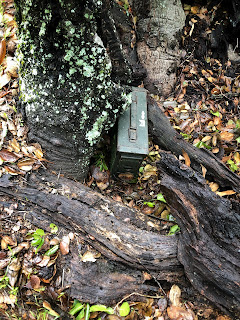January
Barbara Moritsch, Wolf Time
Natasha Trethewey, Memorial Drive
Philip Klay, Missionaries
Daniel Klein, Travels with Epicurus: A Journey to a Greek Island in Search of a Fulfilled Life
George Saunders, A Swim in a Pond in the Rain: In Which Four Russians Give a Master Class on Reading, Writing, and Life
Natalie Diaz, The Poet X
February
Maria Konnikova, The Biggest Bluff: How I Learned to Pay Attention, Master Myself, and Win
Jess Walter, Over Tumbled Graves
William Maxwell, So Long, See You Tomorrow
Betsy Gaines Quammen, American Zion: Cliven Bundy, God, and Public Lands in the West
Kathleen Jamie, Surfacing
Daniel Woodrell, Tomato Red
March
Michael Connelly, The Last Coyote
Jenny Offill, Dept. of Speculation
Eula Biss, Having and Being Had
Ben Fountain, Brief Encounters with Che Guevara
Timothy Hallinan, The Queen of Patpong
April
Madeline Miller, Circe
Miranda Popkey, Topics of Conversation
Elizabeth Bradfield, Toward Antarctica: An Exploration
Sarah Stewart Taylor, The Mountains Wild
Gail Honeyman, Eleanor Oliphant Is Completely Fine
Ross Gay, The Book of Delights
Donna Leon, A Venetian Reckoning
May
Lisa See, The Island of Sea Women
Ben Loory, Stories for Nighttime and Some for the Day
Geoff Dyer, Out of Sheer Rage:Wrestling with D. H. Lawrence
Ann Cleeves, Thin Air
Charlie Mackesy, The Boy, the Mole, the Fox, and the Horse*
June
Keri Hulme, The Bone People
Akiko Busch, Geography of Home
Aminatta Forna, The Window Seat: Notes from a Life in Motion
Kobi Yamada, What Do You Do with an Idea*
Carolyn Forché, What You Have Heard Is True: A Memoir of Witness and Resistance
July
Mark Doty, Still Life with Oysters and Lemon: On Objects and Intimacy
Rebecca Hall, Wake: The Hidden History of Women-Led Slave Revolts
Vendela Vida, Let the Northern Lights Erase Your Name
Dave Eggers, Zeitoun
August
Joseph Campbell, Occidental Mythology
Michael Connelly, Trunk Music
Atiq Rahimi, Earth and Ashes
Sarah Bakewell, How to Live; or, A Life of Montaigne
Katie Kitamura, Intimacies
September
Oliver Jeffers, Here We Are: Notes for Living on Planet Earth*
Elly Griffiths, The Stranger Diaries
Dr. Seuss, Happy Birthday to You
Martin Walker, The Dark Vineyard
Robert Macfarlane and Jackie Morris, The Lost Spells*
October
Batya Gur, The Saturday Morning Murder
Xinran, Sky Burial
Michael Pollan, This Is Your Mind on Plants
Brad Kessler, North
Paddy Donnelly, The Vanishing Lake*
November
Yongey Mingyur Rinpoche, In Love with the World: A Monk's Journey through the Bardos of Living and Dying
Timothy Snyder, Our Malady: Lessons in Libert and Solidarity
Mick Inkpen, Nothing*
Michael Lewis, The Premonition: A Pandemic Story
Oge Mora, Thank You, Omu!*
Amy Hempel, Tumble Home
Donna Leon, Acqua Alta
December
Charles Bowden, Blue Desert
Mark Doty, The Art of Description: World into Word
Mo Willems, Don’t Let the Pigeon Drive the Bus!*
Mark Haddon, The Porpoise
bell hooks, All About Love
Ursula Le Guin, The Lathe of Heaven
Next year's goal: 12! I bet I'll read more than that, but I figure it's time for a relatively undemanding year. Never mind that 12 of the books I read in 2022 have to be over 500 pages long . . . Even when I'm being undemanding, I can be demanding.




















































